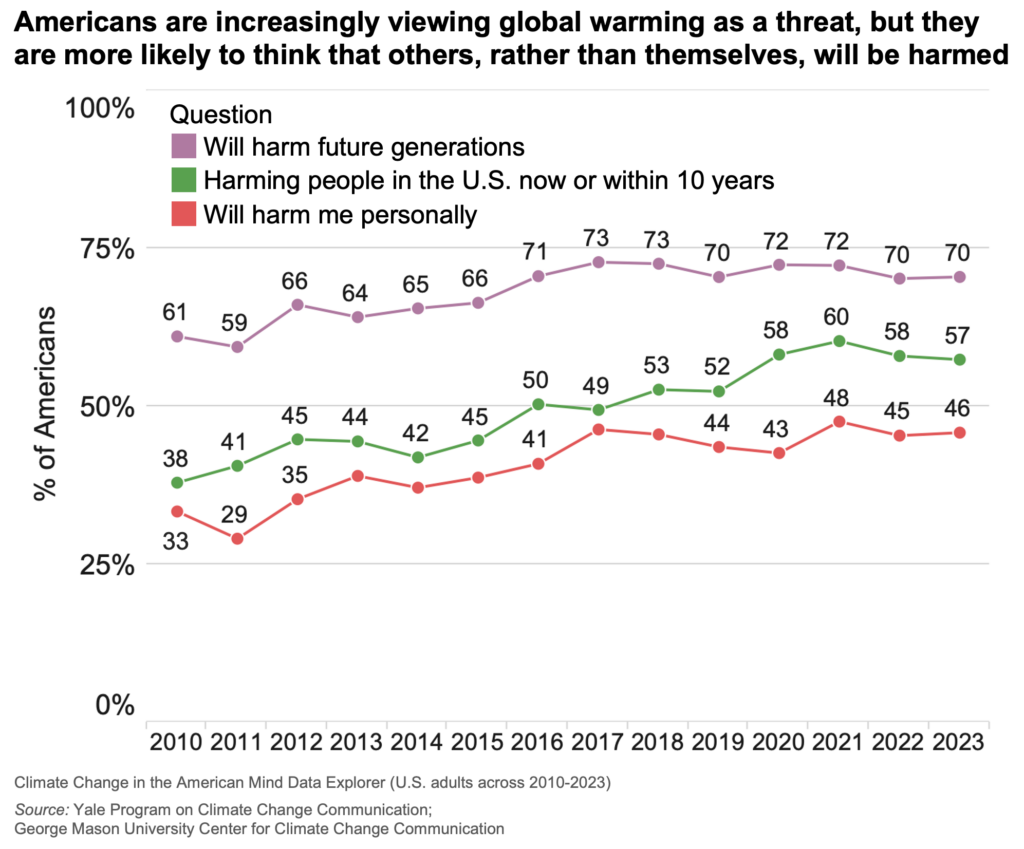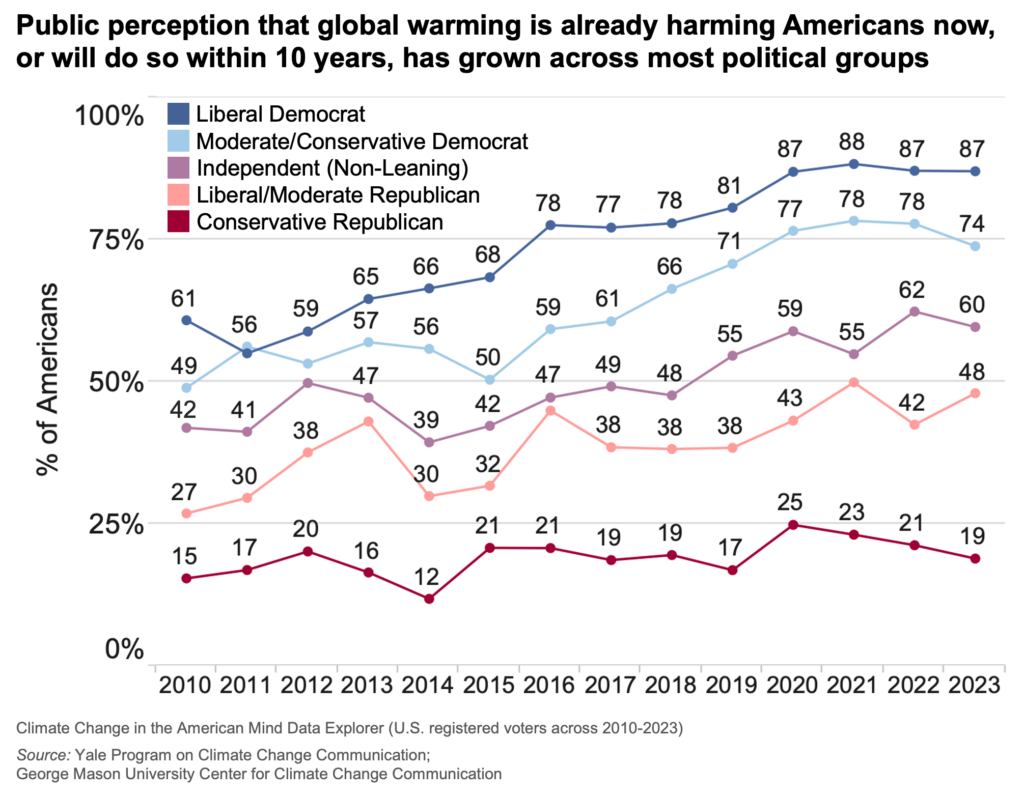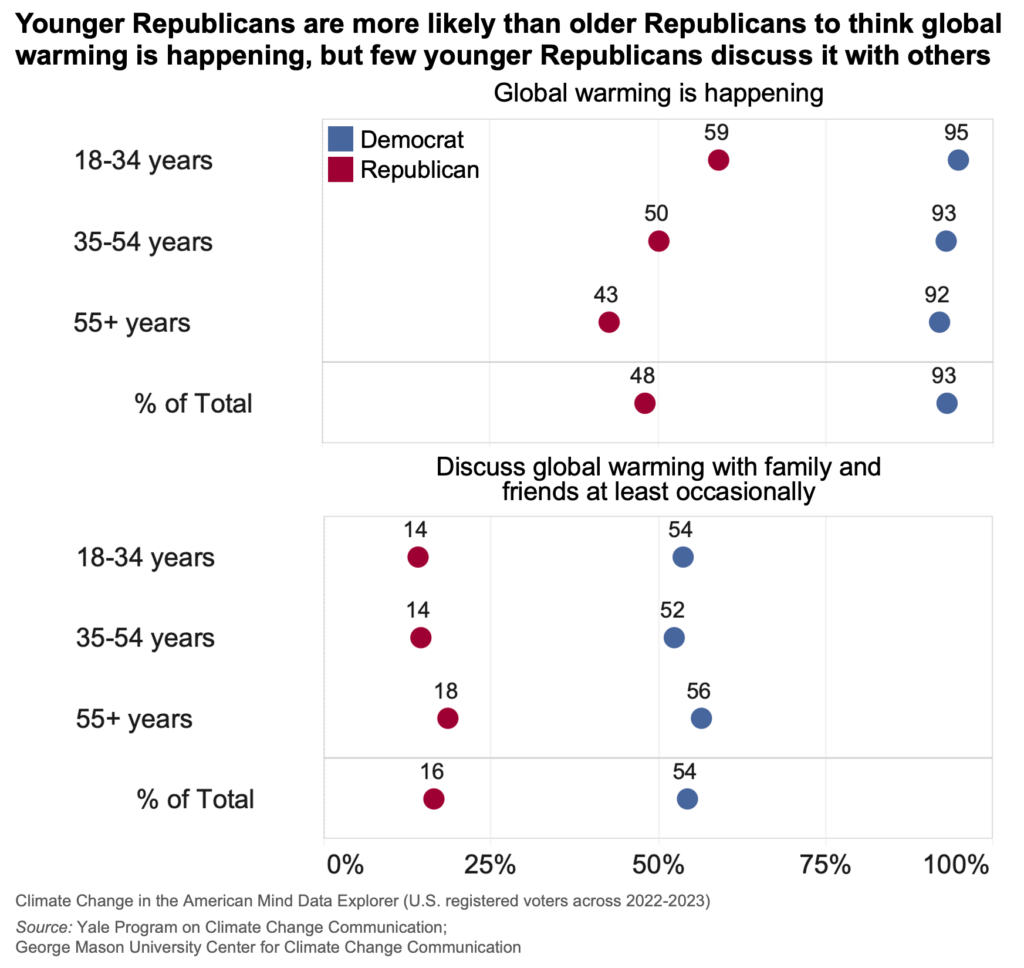Climate Note · May 21, 2024
Public understanding of climate change has grown in the U.S.
By Matthew Ballew, Jennifer Marlon, Emily Goddard, Jennifer Carman, Marija Verner, Seth Rosenthal, Edward Maibach, John Kotcher and Anthony Leiserowitz
Filed under: Audiences, Beliefs & Attitudes, Policy & Politics and Behaviors & Actions

We are pleased to announce the latest version of the Climate Change in the American Mind (CCAM) interactive data visualization tool – the CCAM Explorer. The tool and accompanying dataset include the most recent year of data (ranging from 2008-2023) and enable users to explore Americans’ opinions about climate change over time and across different groups of people. Here are a few highlights from the updated tool:
Americans increasingly understand that global warming is happening and human-caused. Additionally, public understanding of the scientific consensus has increased more than any other measure: The percentage of Americans saying that most scientists think global warming is happening increased from 33% in 2010 to 56% in 2023 (+23 percentage points). Importantly, however, only one in five Americans understand the strength of the scientific consensus about global warming (i.e., that more than 90% of climate scientists think that human-caused global warming is happening).
Worry and risk perceptions about global warming have also increased. More Americans understand that global warming will cause harm to various groups of people (e.g., future generations, the U.S.) and to themselves. However, while Americans increasingly view global warming as a personal threat, on average, they are more likely to think that others will be harmed—a bias of “psychological distance” that has persisted over time. The 2023 National Climate Assessment makes clear that communities in every part of the country are already experiencing considerable climate impacts. When people perceive climate change as distant in time and space, they tend to be less worried about it and less motivated to act.
As illustrated above, the belief that global warming is already harming Americans, or will do so in the near future, has especially increased. Specifically, a majority of Americans now say global warming is currently harming people in the U.S. or will harm them in the next 10 years (+19 percentage points from 38% in 2010 to 57% in 2023). This risk perception has grown most notably among liberal Democrats (+26 percentage points from 61% in 2010 to 87% in 2023), moderate/conservative Democrats (+25 percentage points from 49% in 2010 to 74% in 2023), Independents (+18 percentage points from 42% in 2010 to 60% in 2023), and liberal/moderate Republicans (+21 percentage points from 27% in 2010 to 48% in 2023). By contrast, conservative Republicans have remained relatively consistent in their risk perception over time (+4 percentage points from 15% in 2010 to 19% in 2023).
The CCAM Explorer also shows differences in climate change opinion and behavior across various demographic and political groups. While there is a partisan gap in beliefs about climate change among registered voters, younger Americans are less politically divided on certain measures. Aligned with our previous research, differences between Democrats and Republicans in key beliefs about climate change are, on average, smaller among registered voters ages 18 to 34 compared with those ages 55+. However, although many younger Republicans report more pro-climate views than their older counterparts, very few Republicans across age groups (ranging from 14% to 18%) say they discuss global warming with family and friends at least occasionally. By contrast, about half or more Democrats across age groups say they do so.
The CCAM Explorer shows that public understanding of climate change has increased over time, and that most Americans are worried and perceive global warming as a serious threat. However, there are still important knowledge gaps and misperceptions among the U.S. public. The tool includes many other important results, including support for climate-friendly policies, how often groups hear about global warming in the media, and differences across other demographic groups (e.g., gender, race/ethnicity, education, income). The underlying data are downloadable from the Open Science Framework.



